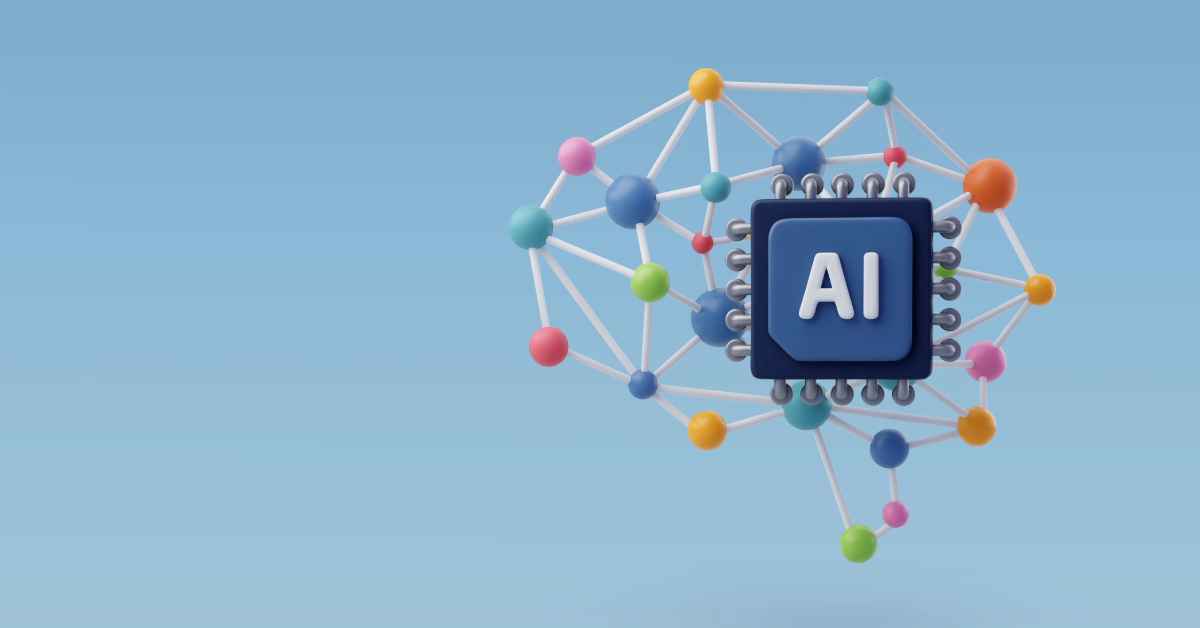Do you know your omnichannel marketing from your multichannel marketing? It is not always easy to define the differences between the two, but this blog will attempt to discuss the differences and similarities between the two as well as provide real-world examples of both practices.
This blog covers:
What is omnichannel marketing?
What is uni-channel marketing?
What is multi-channel marketing?
What are the differences between omnichannel and multi-channel marketing?
Channel cannibalisation
What should I use: omnichannel marketing or multi-channel marketing?
What is omnichannel marketing?
In a nutshell, omnichannel marketing integrates both physical and digital stores and associated channels to create a seamless brand experience. That means that the customer will get the same experience if they shop online or in-store. Your omnichannel strategy could include a customer ordering something online and then picking the said item up in-store. You can see examples of this with companies such as Screwfix and more recently, supermarkets offering click and collect.
Omnichannel marketing allows for a customer to be able to seamlessly alternate between different platforms. Omnichannel is focused on the overall customer experience. This would mean they could look at the item online and do their research and then buy it in-store.
As a brand, you can also place targeted ads for the customer. For example, a customer may look on your website for something, in this instance, let’s say they want a new printer and may have a pop-up offering them something like “sign up today and receive 20% off your first order”. At this point, they are in the decision phase of the buyer’s journey and are not ready to purchase, so they may not sign up straight away. Now for the next week or so this customer could receive targeted advertising from the business showing them the printer they originally looked at. This could be on websites and social media. This is keeping your product fresh in the customer’s mind and helping them make a decision that benefits your business.
For a channel that uses omnichannel marketing well, look no further than Amazon. If like me, you add something to the cart on your phone app to sort out later and then go on your laptop, you will see the item from the app is in the basket already. This demonstrates the app and website are seamlessly connected.
What are the benefits of omnichannel marketing?
Omnichannel marketing has many key benefits to both the consumer and the business. Let’s have a look at a few of them now.
- As a business, your communications will be the same across all platforms. This allows the business to save cash, effort, and time as you only need to produce one message for all your channels.
- A cohesive brand strategy. With all the brand communications being the same across all channels, this can build a brand reputation. All the social media channels would produce the same communications so the customer would be able to recognise the brand no matter what channel they are on. Additionally, if a customer orders something online or in-store, the pricing and return policy is the same.
- A better user experience (UX). With everything seamlessly integrated, the user feels more connected to the brand. Users like the brand consistency approach. They like the fact that the brand pays attention to the details and are aware that if they contact the brand via Facebook messenger or telephone, the messaging will be the same consistent tone.
- From a customer perspective everything links together seamlessly. Let us delve deeper into this one. Again, using the example of purchasing a printer, the customer may begin their search online and then pop along to the store and see the printer working. (While all this is happening, the customer could even be doing some price or brand comparisons).
- It takes on average 6-8 contacts/touchpoints to generate a sale. Omni channel marketing can help with better attribution data. Finding out where your customer first made contact, this could be on a search engine with organic or paid ad traffic or social media (consideration stage), how your customer made their purchase (website/social media/email) and even if they collected in-store or had the item delivered. Attribution works particularly well with the new Google Analytics 4, where you can see more touchpoints or ‘properties’ to understand how a person becomes a customer.
What are the disadvantages of omnichannel marketing?
While there are many positives to omnichannel marketing, it is worth knowing the disadvantages too.
- Technically demanding – As a business, you are posting the same message across all platforms which in turn may not reach target audiences on different platforms. This means that your communications may not align with individual markets and could be missed.
- Communication faults – Omnichannel marketing relies upon all channels working cohesively with each other. But what happens in the event of a technological breakdown? A broken link between a social network and the app/website could result in lost sales and it could be some time before you notice the error. To mitigate this, the best thing to do is to test links regularly and if possible, get someone else to test too, they may have a separate way of testing than you!
What is uni-channel marketing?
Before we discuss what multi-channel is, we want to touch upon uni-channel marketing. Uni-channel, single channel or silo marketing is where a business only attempts to reach a customer through one channel. This channel can be either online or offline. Uni channel marketing runs the risk of not reaching enough people that would be interested in their product. For example, a single store (single channel) on the high street in a small town would only reach those in the town and visitors to the town. They would not have any social media accounts to interact with customers, nor would they have a website which customers could purchase from. Had they had a website, they could inform more potential customers of their offering through testimonials and blog posts. Another example is a business only having a website with no physical store or social media presence. The website would only rely on organic traffic, which limits its market share. In this day and age, this model is almost obsolete.
What is multi-channel marketing?
Multi-channel marketing is where a business distributes content across its online and offline channels and in-store, however, the content is almost produced ‘in silo.’ That is to say that different content may be published on different social media channels. The multi-channel marketing approach works well for businesses where you want to attract different audiences with different messages. For example, you may want to use TikTok to attract a Gen Z audience to your brand, but you also use Facebook to target Gen X and Baby Boomers; in this instance, your messages may be different to gain the attention of your intended market. Multichannel marketing is also used to attract newer and more diverse audiences using a multitude of different platforms that work independently of each other; for example, a company app, a company website, through third-party sites (e.g., Amazon/Etsy). Each of these platforms additionally can have its own price points and return policies, and in some cases are restricted by third-party regulations.
Apple is a fantastic example of multichannel marketing. When you think of shopping in any store you can feel pressured to make a purchase. Some stores have sales assistants bombard you the minute you enter the store. Apple does things differently. Their stores are not so much a place for sales, they are a place for learning, so a person instantly goes in feeling instantly more relaxed. This in turn helps the prospective customer have a go at using the new tech and chatting to any one of the Geniuses, asking broad questions and even technical issues. Once you have bought your Apple product (either online, in-store or from a third party such as a phone company), you then can purchase add-ons such as Apple music and even Apple TV. When Apple launches a new product, they have an in-person event as well as live streams of a product launch which can be streamed on their website. Their communications on other social media channels then include short videos or imagery accompanied by text.
What are the benefits of multi-channel marketing?
Multi-channel marketing has many benefits. Let’s take a look at a few of the ways multi-channel marketing benefits both the consumer and the business.
1. A tailored approach – The biggest advantage of multi-channel marketing is that you can tailor content specifically to each channel. For instance, if you use social media to promote your brand, you can change the tone and content to suit your audience. For instance, TikTok and YouTube are video-sharing sites, whereas your Twitter and Facebook may be more text-based. That’s not to say you cannot use video on Facebook and Instagram (in fact, Instagram is pushing itself more to the video market and away from an image-based site). You can also look generationally at the demographics of those that use certain social media sites:
-
- TikTok – Gen Z
- Instagram – Gen Z & millennials
- Facebook – Gen X & baby boomers
When you look at the above demographics, you can see that different generation favour different platforms. With that in mind, you can target your post copy and accompanying imagery/video to match the audience. This is the same for purchasing channels. Some people love third-party sites such as Amazon for their next-day delivery, others prefer to use a company website or app, while some people prefer to shop in-store.
2. Increased customer base. As you are creating specific messaging for each channel, you are more likely to get more followers than if you were to produce a ‘one size fits all’ message. And an increased customer base can mean increased revenue! Additionally, by offering multiple channels to convert from, you are likely to see a larger portion of customers and sales.
What are the disadvantages of multi-channel marketing?
We have looked at the positives of multi-channel marketing, but it does have some disadvantages too.
- Technical & time capabilities – With running multiple channels and social media accounts, you need to ensure that staff have the right knowledge to understand each channel. You may need someone for social media, another person who can work with app development and design and indeed another person for website maintenance.
- Timely and costly – As multi-channel marketing requires different messaging for each channel, this can become timely and costly. Producing multiple forms of content can be very time intensive especially if you are working with video content.
- Multiple buyer personas – As you are using a variety of channels and each channel has its own user base, you need to map out strong buyer personas for each channel to ensure your messaging Is reaching your target market. As social media trends often change, you will need to periodically check whether your buyer personas and channel markets still match.
- Many differentials for a customer to overcome – As the channels do not work in tandem with each other, there may be different price points and even return policies. For example, if a customer went to your app and saw a pair of trousers for £20, then looked online they could say 20% off today only! Again, the customer could visit the store and buy the trousers and buy a pair online, however, the return policy is different, maybe you cannot return online orders to a shop for example.
What are the differences between omnichannel and multi-channel marketing?
Both omnichannel and multi-channel marketing use a multitude of different platforms on which a business can be visible and at first glance, they may seem like the same thing. However, there are subtle differences between them both.
- Messages – Omnichannel marketing reproduces the same message across each channel (social media/email etc) whereas multi-channel has different messages to target their audience more specifically. For example, they may use a funny video on TikTok, a glossy image on Instagram, and a different image again in an email.
- Number of channels – Omnichannel almost suggests it uses all available channels whereas multi-channel does not use every channel and can be more selective.
- Omnichannel marketing is centred around the consumer whereas multi-channel is centred around the product. The consumer gets a seamless message with omnichannel and no matter where they see/receive the message, it all looks the same and knits together cohesively. In contrast, multi-channel is selling the product in several ways – this can be different text and assorted styles of accompanying image/video.
- Omni channel marketing allows the channels to work with each other (e.g., click and collect) whereas multi-channel marketing has the channels work independently of each other.
Channel cannibalisation
Channel cannibalisation occurs when one channel devours another channel. For example, a business once a brick-and-mortar store opened online, and then customers stopped coming to the physical store and ordered online instead. In that instance, the bricks-and-mortar store was still costing money to run and operate but not achieving any sales.
What should I use: omnichannel marketing or multi-channel marketing?
We can’t tell you definitively here which avenue you should go down, however, you could feasibly incorporate a combination of all strategies. Provided you have the time and resource, you could create variations of copy for each of your social media channels. This way, you can tailor your message to a wider and more diverse audience. You should also link to your website from your social media channels. We do recommend that you be on as many platforms as you can reasonably manage (this is usually determined by the marketing resources your business has).
We hope you found this article interesting and can now differentiate between omnichannel and multi-channel marketing. If we can be of any assistance in helping you achieve your marketing goals, you can contact us for a friendly, informal chat. Also, if great newsletters are your thing, feel free to sign up for our monthly newsletter for industry news and more great content!






